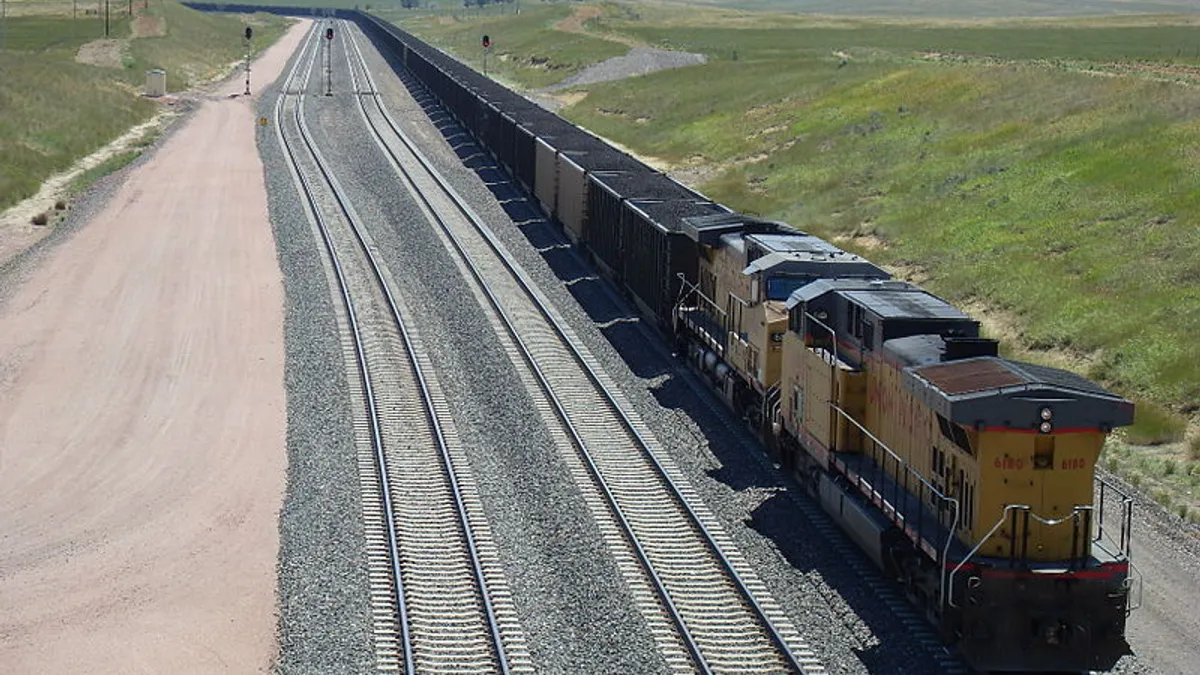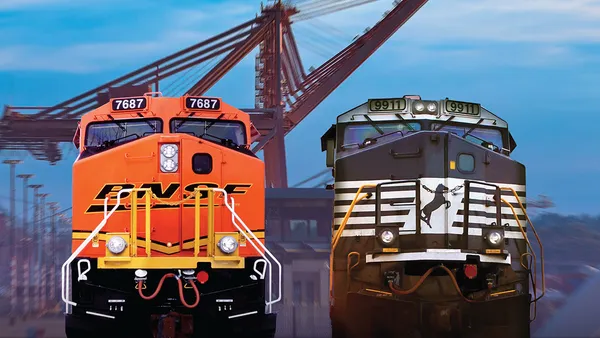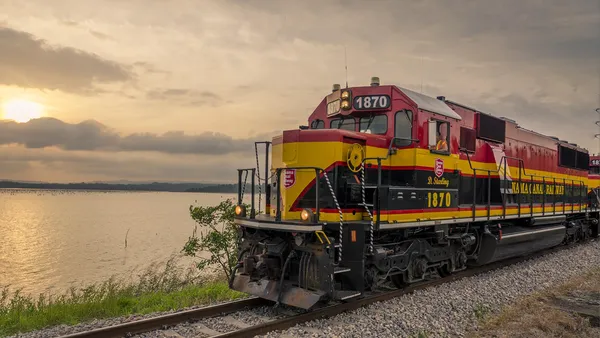Dive Brief:
- The demand for coal from utilities is expected to drop by 50% by 2030, which would lead to a $5 billion revenue loss for railroads, according to a research note from Moody's emailed to Supply Chain Dive.
- Railroads will likely focus on intermodal growth to offset these declines. Intermodal, though, is more time-sensitive than coal. The industry's controversial transition to precision-scheduled railroading (PSR) could play a role in helping to improve on-time delivery as rail companies look to compete with trucking companies with more intermodal traffic, Moody's notes.
- Growth in intermodal has been able to help offset the declines in coal thus far. "Nonetheless, there is no certainty that the railroads can continue booking intermodal volume increases through market share gains over the 2020-30 horizon," the note reads.
Dive Insight:
Most Class I railroads have started turning to PSR to achieve higher on-time delivery rates demanded by intermodal service. But many shippers have been frustrated by this transition to PSR.
"They may claim that PSR improves service but our experience and that of many other shippers has been the opposite," Emily Regis told lawmakers at a U.S. House of Representatives Subcommittee on Railroads, Pipelines and Hazardous Materials earlier this summer. Regis is the fuels resource administrator for the Arizona Electric Power Cooperative and was speaking on behalf of the Freight Rail Customer Alliance.
Increasing efficiency while staying in the good graces of shippers will be an important balancing act for railroads going forward.
The greater focus on intermodal as coal declines could, in fact, create greater capacity for rail shippers, according to Rene Lipsch, vice president and senior credit officer at Moody's, who wrote the research note.
"If anything," Lipsch said in an email to Supply Chain Dive, "certain tracks that will become less utilized by coal trains would free up rail capacity that, depending on the location, rail operators can consider for transporting other freight, if this would be more efficient than using other parts of their network."
Carloads of coal fell when the recession hit in 2008 and have yet to rebound to pre-recession levels. Coal carloads declined more than 21% from June 2008 to June 2019. Despite this, coal remains the largest commodity by volume for railroads, according to Association of American Railroads (AAR) data cited by Moody's.
The AAR released a report in May on the relationship between railroads and coal, concluding that rail coal traffic going forward will largely depend on the competitiveness of other fuels and future regulations. Moody's forecast, meanwhile, reflects a future that continues the trend toward natural gas and renewables.













